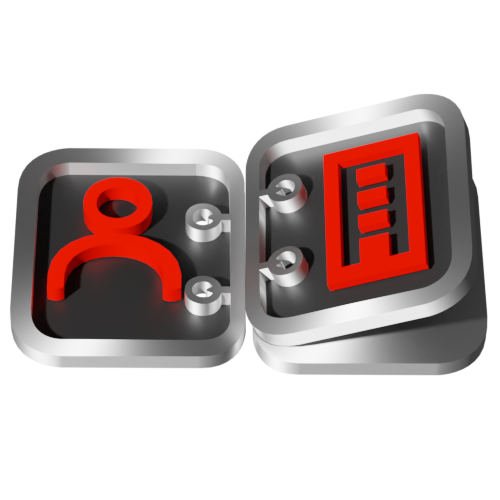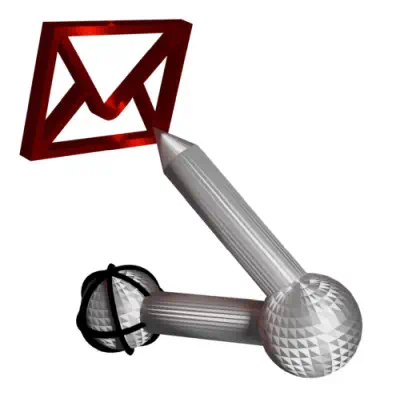AyMINE – Technical documentation
Modules
Integration with ERP Abra Gen
 Task, project & quality management
Task, project & quality management
Manager approval with the task report
Why some data can't be deleted
GDPR and record of qualifications
Qualification of user or contact
Right to Manage Qualifications
Adminitration of areas, projects, calendars
Failure Analysis for an Individual Property of a Component or Process
FMEA – Probability of Detection
FMEA – Probability of Occurrence
 Task, project & quality management
Task, project & quality management
Administration of the Task Management Module
System rights for the task management module
Improvements and Preventive Measures
Methodology and Quality Management systems
What makes up the methodology / SMJ
Problems, tickets and their management
Collaborative Resolution of Multiple Problems
Customer Service Response Generation
Incident and Quality Issue Management
Objects affected by the problem
Problems, Incidents, Helpdesk Tickets
Return project plan by baseline
Sample tasks and methodologies of the area
Effect of the task on the right to modify the attached object
The person responsible for the task
Working procedure – task definition
Management of responsibilities - RACI Matrix
Objects related to the task pattern
 Contacts and directories module (CRM)
Contacts and directories module (CRM)
Address book list and management
Directory or people and companies
Order overview for customer groups
 Contacts and directories module (CRM)
Contacts and directories module (CRM)
System Permissions and CRM Module Settings
Send bulk messages in compliance with GDPR
How to correctly forget a person's details
Unsubscribe and set preferences
for bulk mail
 Web management and automation
Web management and automation
Receiving a message from the web
Human resources
Personalistics – User Permissions and roles
Human Resources module security
Manage department / division data
Overview of Personnel Information for pracov# Employment Contract
Synchronizing staff and system users
 Products, assets and sales
Products, assets and sales
Creating and processing orders
Manage the Property & Business module
Why are the Quality criteria usefull
Managing Finance
Metrics and Measurements
Work summaries from generated data
Technical Modules
Sabre plugin module
Enterprise Architect connector
Database link to Enterprise Architect database
Enterprise Architect connector
System Modules
 The AyMINE Framework Module
The AyMINE Framework Module
AyMINE — Tips for Mobile Usage
Configure how your system looks and works
Gestures and Keyboard Shortcuts
More about how the system works
Private notes and tags for objects
Overview of Modules and Record Types
 System User
System User 
Representation of a system user - present, past and future.
System user accounts include both actual and virtual system users.
User's Working Status
Forgotten User
Users who no longer use the system (because they have already left the company) can usually not be deleted because there is a lot of other information attached to the account - e.g. they are the authors of the decision or their qualifications are proof that the work was done by qualified staff.
Only a user who has been deleted before can be forgotten.
The GDPR website (/doc/en/sys/sysUser_gdpr) is more concerned with ensuring GDPT compliance and meeting legal information obligations.
Deleted User
Deleted User is not forgotten: Deleted account is moved to the trash, it is not possible to work with it, but e.g. worker's name remains unchanged. E.g. Tasks will continue to show the real name of the staff member.
deleting the account will delete the user's personal notes.
Blocked user
Blocked is a user who for some reason cannot temporarily log on to the system. Account can be blocked automatically (based on security analysis) or blocked by administrators.
Account blocking partially prevents use within the system, blocked user e.g. is not able to send a message. Blocking is therefore suitable e.g. in case of long-term unavailability of the worker (e.g. on maternity leave)
Unblocking the user must always be done by the system administrator.
Special user accounts
In addition to regular user accounts, the system supports several special accounts
Virtual user
Virtual user is used to document operations that have not been performed by the real user, but are stored in the history. It is used e.g. to document actions that have been performed by clients on the customer portal, etc.
Virtual user can never log on to the system.
External "padded" user
A padded user is used when you need to assign tasks or responsibilities to an external company or worker who does not work with the system. For example, when you plan responsibilities in the RACI matrix within project.
For a padded user, it is possible to document qualifications as well as for an internal user - it is available for data management in the same way as an internal user, but it is not possible, for example, to include it in a discussion or to send it a message. (However, it may be a participant in a meeting, although in this case it is preferable to use an external contact of a real person.)
A padded account is managed by the project manager or the area where it is used. A padded account can never be logged into, it is not possible, for example.
External Administrator
An external administrator is a user account of system administrators within the data space of a particular client. Most of the system administration can be performed exclusively within clients, and if the client uses external administration support, the administrator must have a dedicated account to do so.
The external administrator is marked in the reports and is excluded from accessing protected corporate data. Even if it has a high-privilege account, it is not possible, e.g., to include it in the encrypted communications group. This prevents it from misusing its privileges and prevents it from being misplaced.
Note: For non-confidential common data, its access is controlled by the normal privileges system, and it is up to the permission of the area manager or the project to allow it.
User activity tracking
For active users, the system monitors whether you are active. Generalized activity information is visible to other users. The information prevents them, e.g., from assigning a task to a worker who has not been using the system for a long time. (The task could then remain unsolved.)
When working at a home‐office or otherwise remotely, the system provides user activity information to co‐workers, who can count on the worker to react.
Activity is distinguished in several stages:
-
In the last 10 minutes, the user has actively performed an action (is actually working – it is not "clicking screens")
-
The user is actively logged in, but is not working
-
The user has not been effectively working for more than an hour (is not using the system)
-
The user has not been accessing the system for a long time (more than 2 days) - it can be assumed that he is on vacation
-
Users currently working with the system are shown active
-
Unknown status is for users who may have AyMINE running in the background (or on mobile) but are not currently working with it.
-
Unavailable are workers who are reported.
Activity Tracking in GDPR Context
User activity information is shown only to people for whom it is important in terms of their own work - executives and co‐ colleagues. It is therefore made available on the basis of legitimate interest.
Information cannot be evaluated retrospectively.